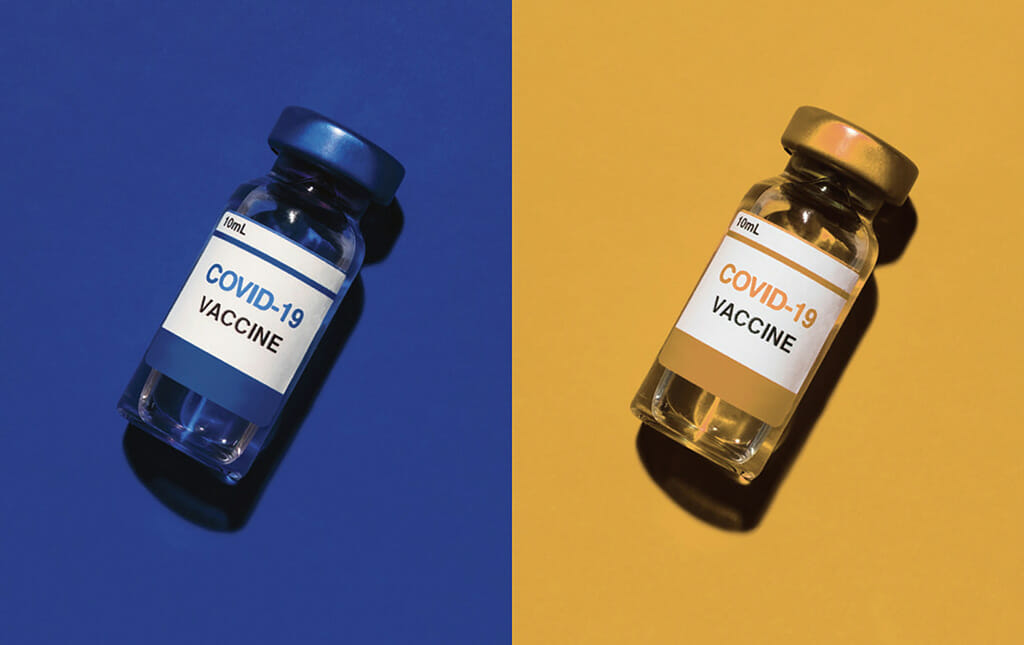Four questions to ask in building COVID-19 vaccine messaging – News – MM&M

By mid-January, the U.S. had surpassed a devastating milestone: More than 400,000 coronavirus deaths and counting. At the same time, the end of the pandemic — in the form of two FDA-approved vaccines — had emerged on the horizon.
When, or if, enough Americans are vaccinated, the virus will burn itself out. Alas, this scenario isn’t a foregone conclusion. By some estimates, up to 80% of Americans need to be vaccinated to achieve herd immunity. Meanwhile, according to recent polling, roughly a third of Americans intend to refuse a vaccine once it becomes available to them, according to Matt Motta, an assistant professor of political science at Oklahoma State University.
Thus, it’s hard to imagine a time when effective messaging around vaccines has been more important. While a small segment of the population was already vigorously anti-vax before the pandemic, not everyone who is reluctant to receive the COVID-19 vaccine falls into this group, notes Hemi Tewarson, a visiting senior policy fellow at Duke-Margolis Center for Health Policy.
“There is a tranche of people who want to wait,” she says. “They aren’t necessarily the same level of vaccine hesitancy we were dealing with before, but they’re saying, ‘We don’t want to be the first.’”
As a result, Tewarson adds, “The communications piece is critical. It really can make a difference, because you aren’t just addressing people who are completely against vaccines.”
Motta’s research supports this. In general, he says, our “attitudes and behaviors about vaccination are very malleable.” Communication matters.
With that in mind, here are four questions to consider when crafting messages that will move the needle.
1. Who is your audience?
Demographics are important. “Winning in vaccine confidence, specific to COVID-19, is far from one-size-fits-all,” says Elyse Margolis, president, WCG at W2O. How well a particular message will be received depends on a variety of factors, including an individual’s political affiliation, race, ethnicity, age and location.
To that point, segmenting audiences allows for more empathetic, targeted messages. “You begin to understand someone rather than slapping your head and saying, ‘What an idiot, why don’t they get this?’” explains Ogilvy Center for Behavioral Science president and founder Christopher Graves.
For example, while many people respond to messages about the importance of getting vaccinated for the greater good, the appeal of such messaging isn’t universal, Graves says. For libertarians and those with a strong individualistic mindset, a more effective strategy might be to emphasize themes of personal security and accountability, as well as how vaccination might ultimately provide “the freedom to stay at work or keep your business open.”
2. What are their concerns?
By far, the most universal ones are that the COVID-19 vaccine isn’t safe or that it isn’t effective. That said, there are other common reasons for vaccine hesitancy that need to be addressed, such as the belief vaccination will be difficult and time-consuming, or that it won’t be free.
A crucial part of effective messaging is treating these concerns as valid, rather than dismissing them out of hand, Tewarson stresses. Simply telling people, “Look, the science says it’s fine, just get the vaccine,” is unlikely to prove a winning strategy; Tewarson similarly suspects campaigns that attempt to shame people into receiving the vaccine will be met with the same skepticism. Instead, she recommends emphasizing what can be gained from immunity and opening up the dialogue, allowing people to voice their addressable concerns.
Simply presenting people with a litany of facts is also unlikely to work, Motta believes. Oftentimes people have a solid grasp of the safety and efficacy arguments, yet still remain on the fence.
“Vaccine hesitancy is the result of a constellation of political, social and psychological factors,” Motta continues. “A better strategy is to create messages that recognize specific concerns but try to portray the vaccine as something that can alleviate them.”
3. Is the message factual and accessible?
As vaccine trials quickly progressed, providing accurate, up-to-date information became a delicate but all-important goal. By way of response, some organizations chose a shock-and-awe strategy: They released troves of data. With multiple vaccine candidates moving through the approval process, manufacturers published hundreds of pages detailing, among other things, clinical trial designs.
While Margolis characterizes such efforts as a positive step, she cautions that there is “a very big difference between transparency and accessibility.” The first is important — but without the second, the signal risks getting lost in the noise.
The question then becomes how to make complex, evolving data digestible without “watering it down so much that it’s patronizing,” Margolis adds. She points to Johnson & Johnson’s The Road to the Vaccine, a video series featuring interviews with scientists, global health leaders and other COVID experts, as a best-case example.
4. Who is the messenger?
The person delivering the message matters, because people are more likely to reconsider beliefs inconsistent with scientific consensus “when that information comes from someone we ordinarily agree with on other issues,” Motta says. “Given America’s deep political divide, we need a pluralistic set of sources underscoring vaccine safety,” including prominent figures from both parties.
Having Dr. Anthony Fauci publicly receive the vaccine sends an important message, no doubt. But Motta stresses, “What’s going to convince Republicans to vaccinate is seeing Vice President Mike Pence get the vaccine on television.”
This insight is one of the primary driving forces behind the National Organizing Coalition on Virus Information Distribution (NOCOVID), which aims to deliver targeted vaccine messages to different demographics. The initiative tasked a diverse array of celebrities, including actors Tiffany Haddish and Matthew McConaughey, with interviewing Fauci about the vaccine. McConaughey was chosen in large part “because we knew there was hesitancy in red states, and he played really well [with those audiences],” says Graves, a coalition member alongside health, political and communication dignitaries such as Mary Matalin, Larry Weber, Susan McPherson and Rahm Emanuel.
At the same time, smaller-scale influencers are using their platforms to disseminate information about the vaccine. While the bag is mixed — misinformation still thrives on social media, to put it mildly — Margolis says she is heartened by the number of high-profile doctors and health professionals, such as Dr. Uché Blackstock, who have shared their vaccination experiences with their followers. These posts often include honest discussions of side effects, such as low-grade fevers and sore arms. Such discussions serve to strip away much of the fear and uncertainty from the process.
“It’s what we need to hear and what we need to see,” Margolis says. “It can’t all come from industry.”
*** This article has been archived for your research. The original version from Medical Marketing and Media can be found here ***


